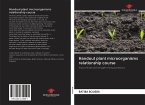Recognition of the importance of viral diseases in the plants has always been obstructed by the evasive nature of the causal factors. With viruses no symptoms of the disease are generated and signs in plants can be easily muddled with genetic and physiological disorders. The plant viruses are obligate pathogens consisted of one or more pieces of nucleic acid (RNA and DNA) and a coat protein. Generally, the term of the severity of symptoms induced by viruses is directly linked to their effect on the crop. The plant virus can be spread from diseased plants to healthy ones by contact, or by vectors. Viral diseases control in the crops by the growing of healthy planting materials and breeding of resistant cultivars. Besides, using techniques sensitive, specific, and fast to detect virus depends on serological and molecular methods. In addition, using metagenomics in the plant viruses which led to the discovery of many new viruses that were not known before in both cultivated and uncultivated plants. This book answers the following questions: How can plant virus infect human? How can plant viruses be controlled?








